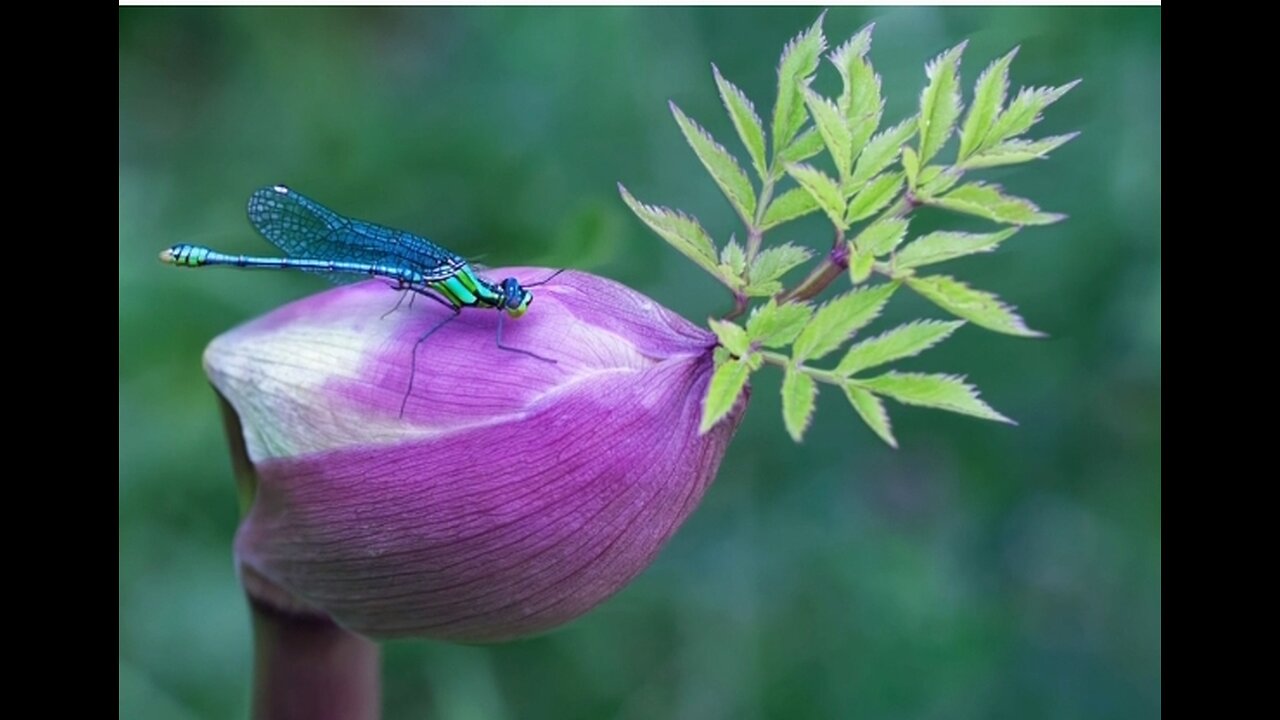Premium Only Content

"Dragonflies: Guardians of the Water's Edge"
Dragonflies are fascinating insects belonging to the order Odonata, known for their striking appearance and remarkable aerial abilities. Here are some key details about dragonflies:
### Appearance
- **Body Structure**: Dragonflies have elongated bodies, large multifaceted eyes, and two pairs of strong, transparent wings. Their wings can be colorful, often displaying iridescence.
- **Size**: They vary in size, with wingspans ranging from 2 to 5 inches, depending on the species.
### Behavior
- **Flight**: Dragonflies are skilled fliers and can hover, fly backward, and change direction with precision. They are among the fastest insects, capable of reaching speeds of up to 30 miles per hour.
- **Predatory Nature**: They are carnivorous and primarily feed on other insects, such as mosquitoes, flies, and smaller dragonflies. They catch their prey mid-air using their legs, which form a basket-like structure.
- **Life Cycle**: Dragonflies undergo incomplete metamorphosis. Their life begins as aquatic nymphs (larvae) that live in water for months or even years before emerging as adults. The nymphs are also predatory and feed on small aquatic organisms.
### Habitat
- **Preferred Environment**: Dragonflies are commonly found near freshwater bodies like ponds, lakes, rivers, and wetlands. They rely on these habitats for breeding, as their larvae are aquatic.
- **Global Distribution**: Dragonflies are found worldwide, with over 3,000 species identified. They are most diverse in tropical regions but can be found in temperate zones as well.
### Ecological Importance
- **Mosquito Control**: Dragonflies are beneficial to humans because they help control mosquito populations by preying on both adult mosquitoes and their larvae.
- **Indicator Species**: They are often used as bioindicators of ecosystem health because they are sensitive to changes in water quality and habitat conditions.
### Cultural Significance
- **Symbolism**: In various cultures, dragonflies symbolize change, transformation, adaptability, and self-realization. In Japan, they are considered symbols of courage and strength.
### Conservation
- **Threats**: Despite their adaptability, dragonflies face threats from habitat loss, pollution, and climate change. Conservation efforts are crucial to protect their natural habitats and ensure their survival.
Dragonflies are not just beautiful to observe but also play a crucial role in maintaining the balance of ecosystems. Their presence is often a sign of a healthy environment.
-
 LIVE
LIVE
vivafrei
3 hours agoDid Trump Secure a Cease-Fire Between Israel and Iran? Update on the Canadian Ostrich Farm AND MORE!
9,222 watching -
 1:16:08
1:16:08
Awaken With JP
1 hour agoThey Know What The F*CK They're Doing - LIES Ep 97
12.8K6 -

The Quartering
3 hours agoYoutuber Takes Her Own Life Over Harassment, Why Women Are Single, Trans Creep Faces JAIL & More
92K16 -
 LIVE
LIVE
The HotSeat
57 minutes agoTrump Keeps Winning — They Keep Whining While America Rises
533 watching -
 LIVE
LIVE
StoneMountain64
3 hours agoCasuals > Ranked ... I said it
423 watching -
 LIVE
LIVE
Barry Cunningham
3 hours agoPRESIDENT TRUMP IS ANGRY TODAY! CEASEFIRE IS BACK ON AND OTHER NEWS!
1,328 watching -
 1:39:42
1:39:42
Winston Marshall
2 hours agoHistorian Reveals Why Peace Has Been Impossible: Israel & Iran w/ Dr Benny Morris
21K7 -
 LIVE
LIVE
China Uncensored
1 hour agoThe REAL Reason Trump Bombed Iran
137 watching -
![[Ep 695] Cuomo vs. a Muslim Communist | War Powers & the Constitution | Sam Anthony [your]NEWS](https://1a-1791.com/video/fww1/2c/s8/1/P/Z/s/W/PZsWy.0kob.1-small-Ep-695-Cuomo-vs.-a-Muslim-C.jpg) LIVE
LIVE
The Nunn Report - w/ Dan Nunn
1 hour ago[Ep 695] Cuomo vs. a Muslim Communist | War Powers & the Constitution | Sam Anthony [your]NEWS
95 watching -

I_Came_With_Fire_Podcast
15 hours agoUSMC Colonel: Trump Should Keep Ukrainian Refugees
5.3K3